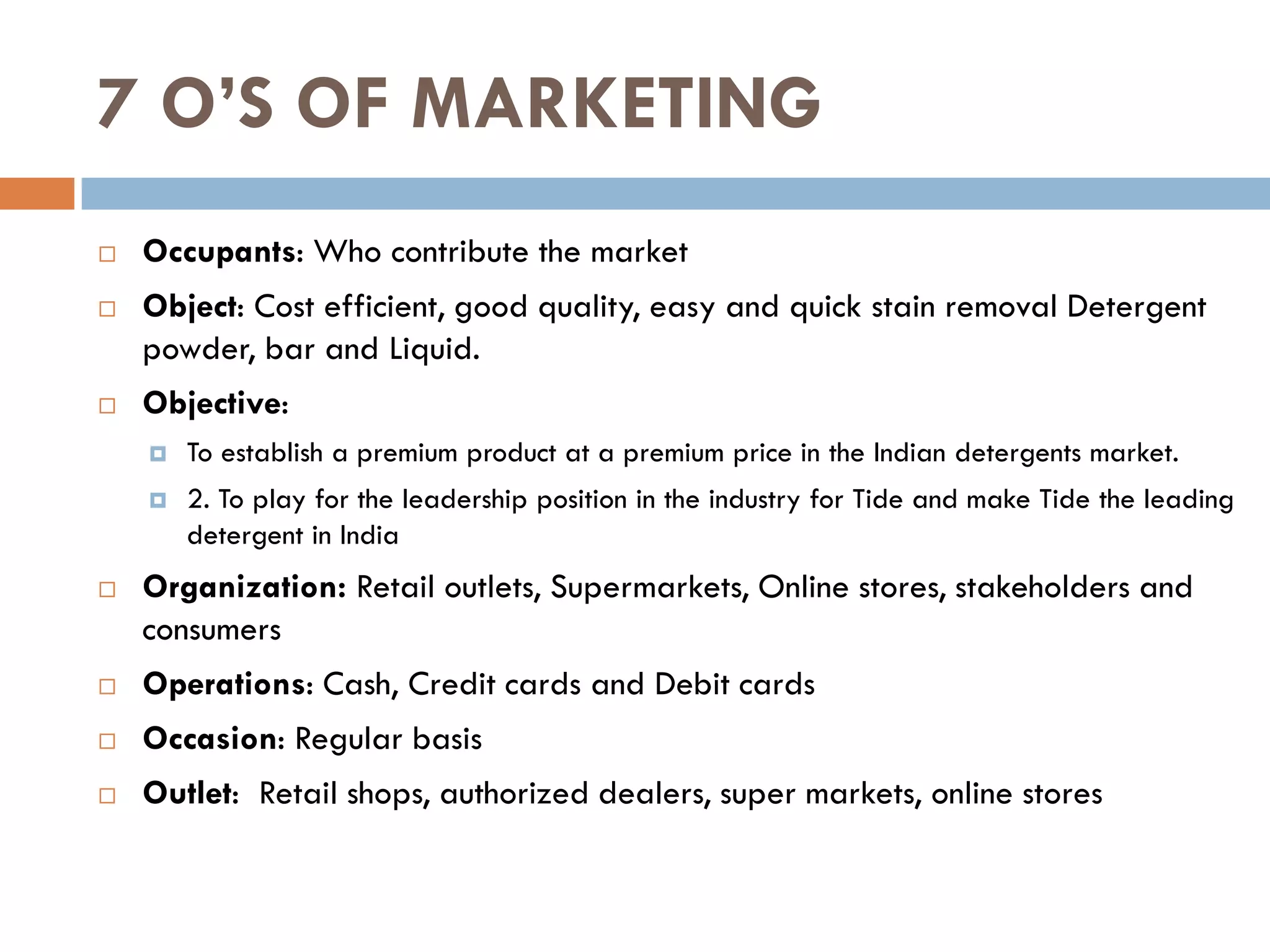This document provides a market analysis of Tide detergent in India. It discusses the social, technological, economic, ecological, political/legal environments and how Tide positions itself within these. A SWOT analysis finds Tide's strengths are its market leadership, quality and reputation, while weaknesses include strong competitors. The analysis also covers Tide's target demographics, product mix, and life cycle. It evaluates Tide using frameworks like the 4Ps, Maslow's hierarchy, and the Ansoff matrix to understand how Tide markets to consumers in India.






























































